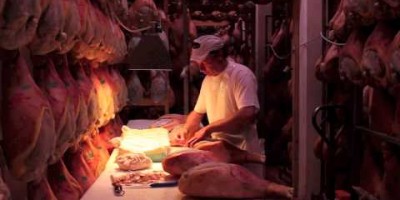Prosciutto di Parma: a fairytale

Prosciutto di Parma: a fairytale
It can be sweet, meaty, buttery, salty; nutty or funky—the nuance of flavor in prosciutto di Parma is remarkable. But the process of making it couldn’t be simpler: ham, salt, and air.
Well, maybe simple isn’t the best term.
The Parma Ham Consortium came together in 1963 in order to establish standards for their prosciutto. Like balsamic vinegar from Modena or San Marzano tomatoes, prosciutto di Parma is a Denomination of Protected Origin product, meaning that it has to be made to certain specifications, and within a specific region to earn its distinction.
What makes a prosciutto di Parma ham deserving of the name? It must be produced in the hills around Parma, set between the rivers Enza and Stirone, and at no higher than 900 meters (just over half a mile) in altitude. The type of pig matters, too: Duroc, Large White, and Landrace breeds only, fed on diets of grain and whey from Parmesan production, and raised to at least 9 months of age and 140 kilograms, or 308 pounds. All this takes place at certified farms and slaughterhouses within ten regions of Northern Italy, each subject to inspection and supervision by the Consortium, as well.
Other prosciutti have protected designations as well—prosciutto San Daniele, prosciutto Toscano—but prosciutto di Parma is easily the best-known. Anytime you see the five-pointed crown? That’s the seal of approval from the Consortium.
The tradition of ham in these parts dates back to the Roman era; indeed, the process today, while under strict temperature control, models the temperature fluctuations of the region. The process would begin in October and November, with several saltings and rest periods—mimicked today by several consecutive periods of cold storage. Months later, when the hams are hung, modern production plants open their windows to allow the local breezes in. All prosciutto di Parma must be cured for at least 12 months, often much more.
video from youtube


 March 3, 2015
March 3, 2015 







Comments are closed.